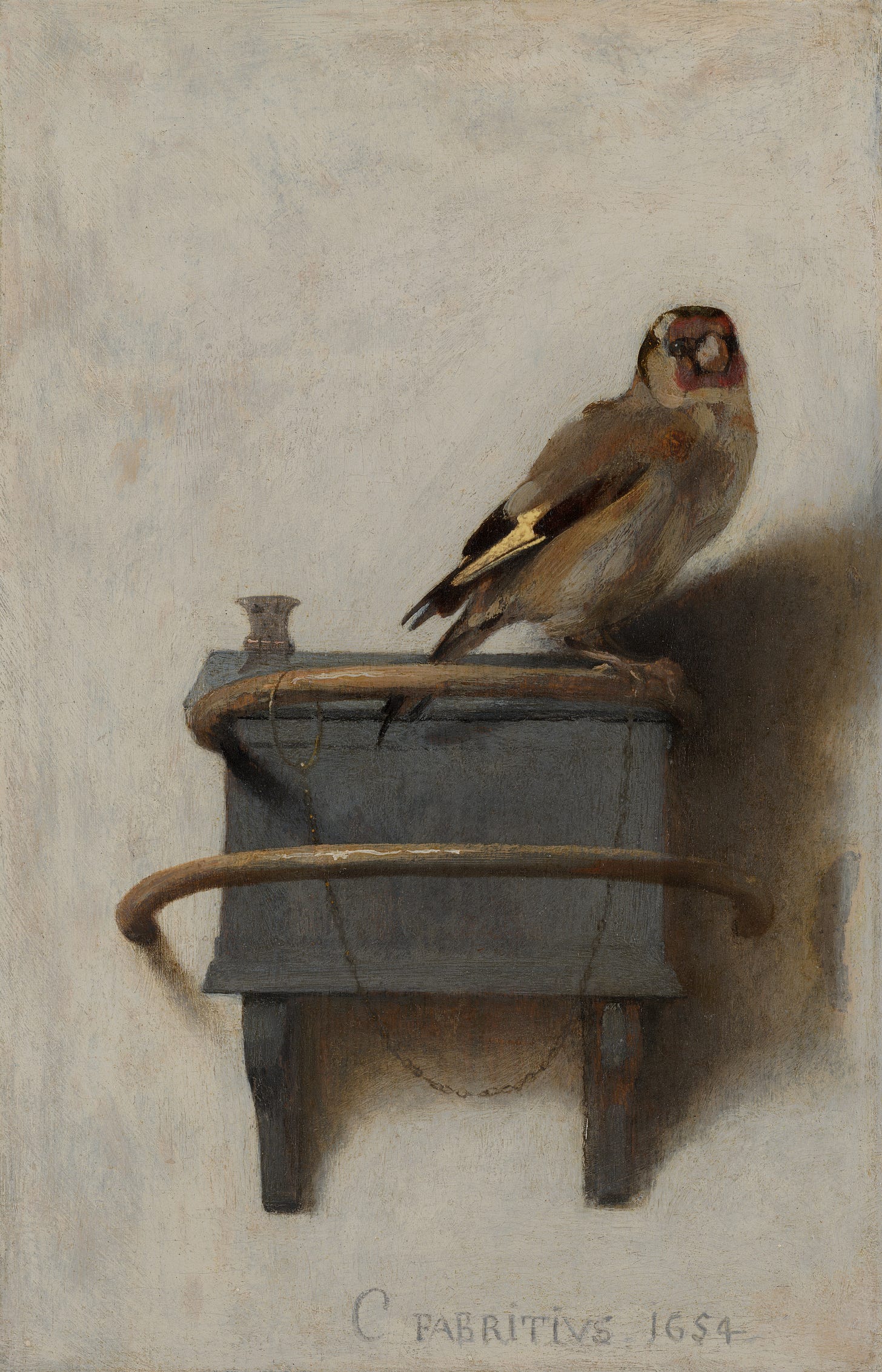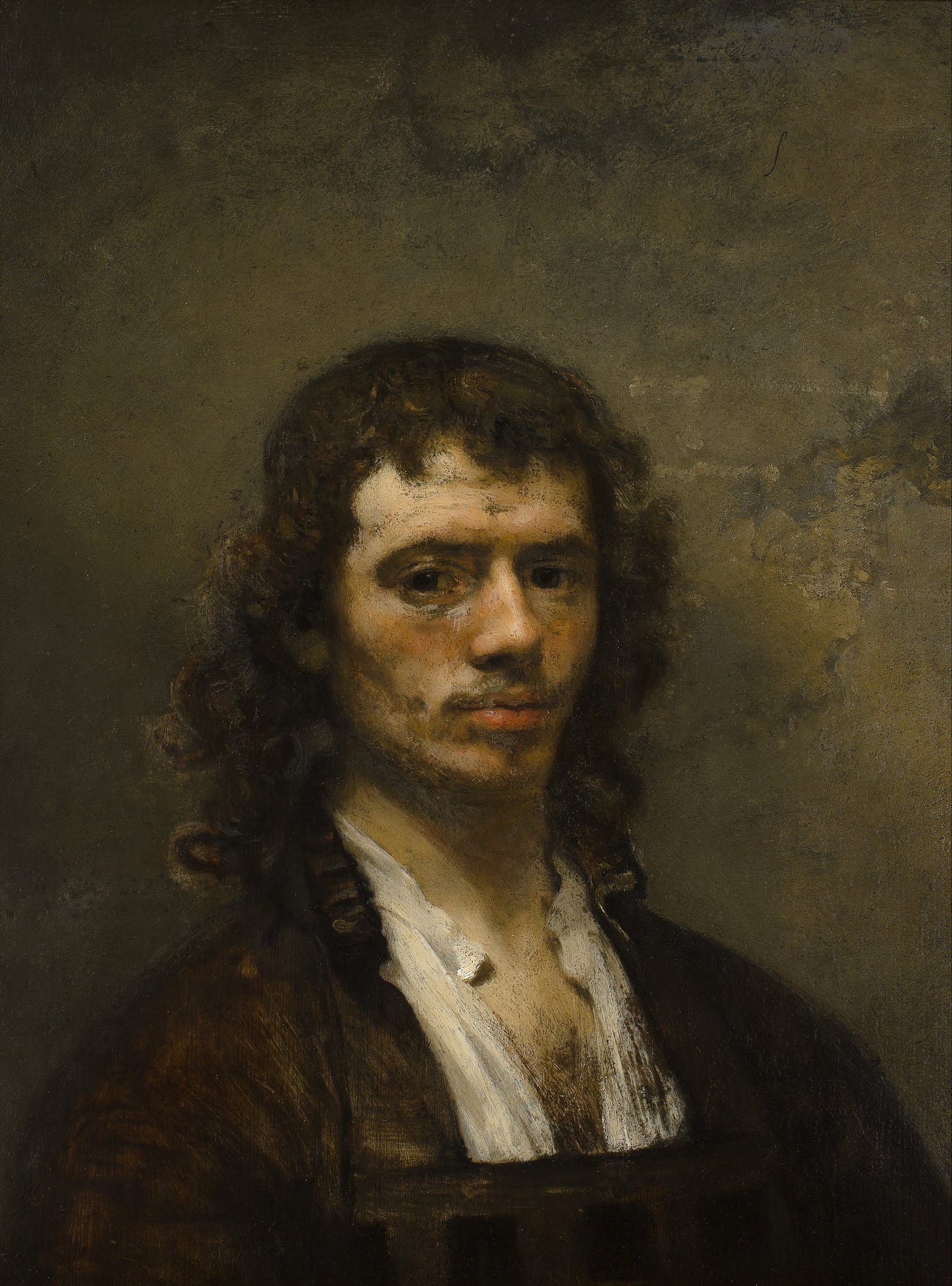Why The Goldfinch?
Why we chose "The Goldfinch" by Carel Fabritius, as the emblem of The Everyday School of Art
The Goldfinch was painted by Carel Fabritius in 1654. In the same year, Fabritius was killed in the Delft Gunpowder Magazine Explosion.
What do we see when we look at this image of a captive bird? It is an intimate painting (33.5 x 22.8 cm); an object which cohabits easily within our own space. There is incredible brushwork; the way the bird is constructed reminds us of Impressionist painting, and yet when we stand back and see the beautiful shadows against the whitewashed wall, the painting is totally believable - the bird looks down at us from its vantage point, speaking to us perhaps, about dignity, patience and acceptance.
When we meet eye to eye with the bird, we span some fourteen generations. Fourteen generations of birth, death, loving, fighting, progress and destruction, and through all that noise, and beyond the violent death of the artist, the little bird, in its gentle quietness, still speaks to us. The smallest, most vulnerable thing survived.
What does the bird challenge us to think, as we look it in the eye? What does it challenge us to say? To do? Who are we, in 2023, when we look at the bird?
Perhaps, as members of The Everyday School of Art, we can take three things from The Goldfinch:
If Carel had not acted to paint the image when he did, it would not now exist. Of course he did not foresee the horrific explosion which killed him, so other motives were at force. Whatever those motives were, no matter how quietly they might have spoken to him, he chose to listen. Ditto: our creativity is precious, and while we shouldn’t be panicked or rushed, we should act when we can.
The restrictions we feel in our lives come in various guises, but we can still show up in the world with dignity, patience, and, if we are lucky, acceptance. As Patrick Bringley said in his book All The Beauty In The World, “Meaning is always created locally. The greatest art is produced by people hemmed in by circumstances, making patchwork efforts to create something beautiful, useful, true.”
Some things just don’t change. Like resting your hand against the cool of a church interior, we can search out the connections all around us with who we were and who we are, and most probably, who we will become. The art we make has the potential to become stitches that connect us all, and show us who and what we might be, and in that way, art IS important.
We Invite You…
We invite you to escape your everyday life for just three minutes, slow down your looking, and spend that time with The GoldFinch (click the link, or if you can visit the real thing - all the better).
Set a timer for three minutes.
Move around the painting (slowly). Take advantage of the intimate version the digital world offers us, whilst all the time using your imagination to envision the physicality of oil on wood.
Try not to intellectualise what you see. Try not to bring prior knowledge to the experience. Rather than think, try to see and feel. Instead of “like” “don’t like”, become curious with your eyes and instinctive self.
Nurture an awareness, that as you look, there are three elements at play: You, the painting, and the here and now.
If you have a voice in your head which is impatient with time, or critical of your thoughts, acknowledge it and then dismiss it. Return to the painting and the here and now.
When the time is up, say something to the bird, and move from the painting.
Go about your day, and see if at any point, your mind returns to anything you saw or felt when looking at The Goldfinch. Feel free to share your thoughts below.
Carel Fabritius (1622-1654), One of Rembrandt’s most talented students





